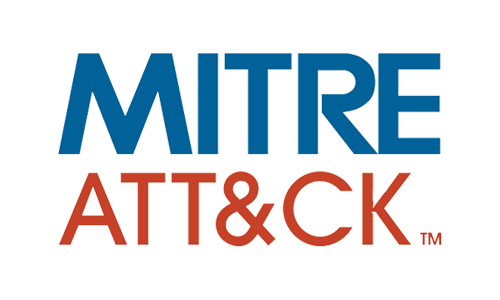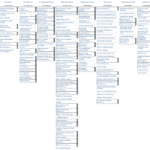
MITRE ATT&CK Framework


Cyber Security Foundational Knowledge: MITRE ATT$CK
Date: 20 June 2023
The MITRE ATT&CK Framework is a widely recognized and extensively used knowledge base that categorizes and describes various types of cyber threats and attack techniques. It aims to provide organizations with valuable insights into how adversaries carry out cyber attacks, enabling them to enhance their understanding and defense capabilities.
Understanding the FrameworkThe primary purpose of the MITRE ATT&CK Framework is to enhance organizations' understanding of cyber threats. It achieves this by providing a comprehensive model that outlines the steps and techniques adversaries employ during different stages of a cyber attack. Instead of focusing on specific malware or vulnerabilities, the framework takes an adversary-centric approach, focusing on the tactics and techniques used by attackers. This enables organizations to anticipate and detect attacks, even when facing unknown or advanced threats.
Key AspectsThe framework covers a wide range of attack techniques across multiple platforms, including Windows, macOS, Linux, mobile devices, and cloud environments. It encompasses various stages of an attack, such as initial access, persistence, privilege escalation, lateral movement, and data exfiltration. By mapping these techniques to real-world attacks and continuously updating the framework based on observed adversary behavior, organizations can align their defenses and detection capabilities accordingly.
Benefits and ApplicationsLeveraging the MITRE ATT&CK Framework allows organizations to develop more effective security strategies and defenses. By understanding the prevalent and sophisticated attack techniques, organizations can prioritize their security investments, identify security gaps, and strengthen their incident response capabilities. The framework serves as a valuable resource for intelligence-driven defense, enabling organizations to proactively defend against cyber threats.
The MITRE ATT&CK Framework is developed collaboratively, with contributions from a broad community of cybersecurity experts. This collaborative approach ensures that the framework remains comprehensive, accurate, and relevant to the evolving threat landscape. Organizations can apply the framework in their security operations by aligning their security controls, monitoring capabilities, and incident response procedures with the techniques outlined in the framework. This integration enhances their ability to detect, respond to, and mitigate cyber threats effectively.
Furthermore, the framework assists organizations in compliance and risk management efforts. By understanding the specific techniques adversaries may employ, organizations can align their security measures with industry best practices and regulatory requirements. This helps organizations meet compliance obligations and strengthen their overall risk management posture.
Summary of MITRE ATT&CK Steps- Initial Access: The step focuses on the initial entry point adversaries use to gain access to a target network or system.
- Execution: Once inside the target environment, adversaries execute malicious code or leverage legitimate tools to establish a foothold and gain control.
- Persistence: Adversaries aim to maintain a persistent presence within the compromised system or network.
- Privilege Escalation: Attackers attempt to elevate their privileges and gain higher levels of access within the target environment.
- Defense Evasion: Adversaries employ various techniques to evade detection by security measures or security teams.
- Credential Access: Attackers aim to obtain valid account credentials to gain unauthorized access to systems or networks.
- Discovery: Adversaries conduct reconnaissance to gather information about the target environment.
- Lateral Movement: Once inside the target network, attackers move laterally to gain access to additional systems or resources.
- Collection: Adversaries seek to gather valuable information or data from compromised systems or network resources.
- Exfiltration: Attackers attempt to transfer stolen data from the target environment to an external location.
- Command and Control: Adversaries establish communication channels with external servers or command and control infrastructure.
- Impact: This step refers to the ultimate goal or impact of the attack.

Understanding these steps within the MITRE ATT&CK Framework helps organizations identify potential attack vectors, enhance their detection capabilities, and strengthen their overall defense strategies. The MITRE ATT&CK Framework empowers organizations to enhance their understanding of cyber threats and strengthen their defense capabilities. By leveraging this comprehensive knowledge base, organizations can proactively defend against adversaries, prioritize security investments, and ensure compliance with regulations. The framework serves as a valuable resource for high-level executives, enabling them to make informed decisions to protect their organizations from cyber threats.